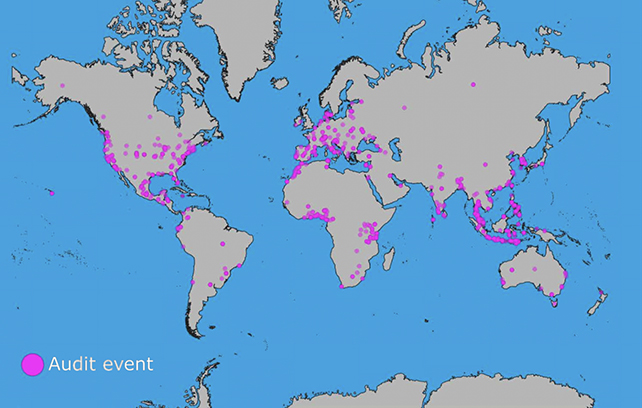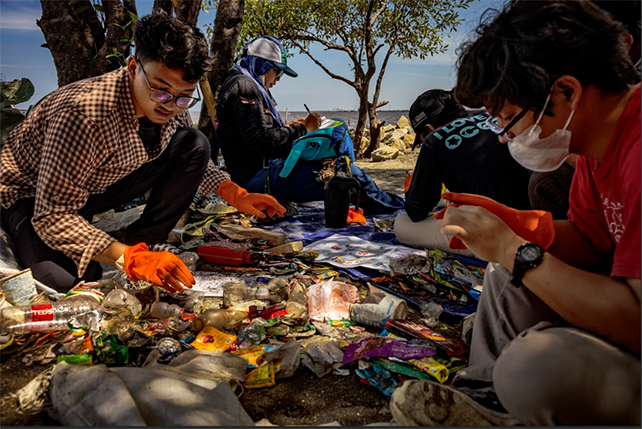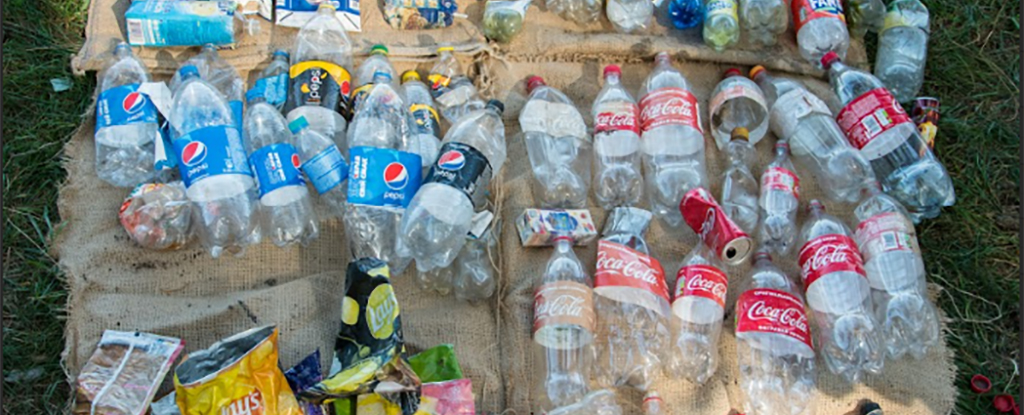Products You May Like
Of all plastic waste pollution that can be traced back to its producer, almost a quarter can be traced back to just five major corporations, a new study has found.
An international team of researchers analyzed some 1.87 million environmental plastic waste items logged between 2018 and 2022, finding more than half of the items couldn’t be connected to a specific company.
Of the rest, 24 percent could be traced to five companies. Soft drink manufacturers Coca Cola and PepsiCo were responsible for 11 and 5 percent respectively. This was followed up by multinational food and drink giants Nestlé and Danone, and one of the world’s biggest producers of tobacco-related products, Altria.
The researchers say that more accountability is essential if we’re to tackle a growing plastic pollution problem – but also suggest that positive actions from just a few major multinationals could have a significant difference.

“Phasing out single-use and short-lived plastic products by the largest polluters would greatly reduce global plastic pollution,” write the researchers in their published paper.
Of the branded plastic items analyzed in the study, more than half of them came from just 56 companies, and it was generally the case that the more plastic a company produced, the more waste they contributed.
Food and beverage companies in particular – because of the reliance on single-use plastic in their products – should be encouraged to do more to reduce the amount of plastic waste they contribute, the researchers suggest.

“Food and beverage products also have a higher likelihood of being consumed on-the-go, while household and retail products have a higher likelihood of being consumed within buildings and are thus less likely to escape materials management infrastructure and leak into the environment,” the researchers write.
Efforts can be made in reducing plastic use, improving waste management systems, changing product designs, and increasing recyclability, the study authors note. There are meaningful steps that can be taken.
As for the huge amounts of unbranded plastic that can’t be linked to individual companies, the researchers are calling for international standards and shared databases to be set up, so that this waste can be tracked more effectively. As with most problems, the better the understanding we have of it, the better we can tackle it.
Meanwhile, scientists continue to search for ways to make plastic that’s more biodegradable and doesn’t end in the environment. With plastic production doubling across the last two decades, it’s an issue that’s only getting more worrying.
The team behind the study also acknowledged the efforts of the more than 100,000 volunteers across 84 countries who took part in the collection events, across sites including beaches, rivers, and parks. The individuals, working as part of the Break Free From Plastic organization, were vital in making the research possible.
“The volunteer audit events have value for global plastic pollution monitoring with broad spatial and temporal coverage, which when analyzed can inform policies while enhancing public engagements,” write the researchers.
The research has been published in Science Advances.
